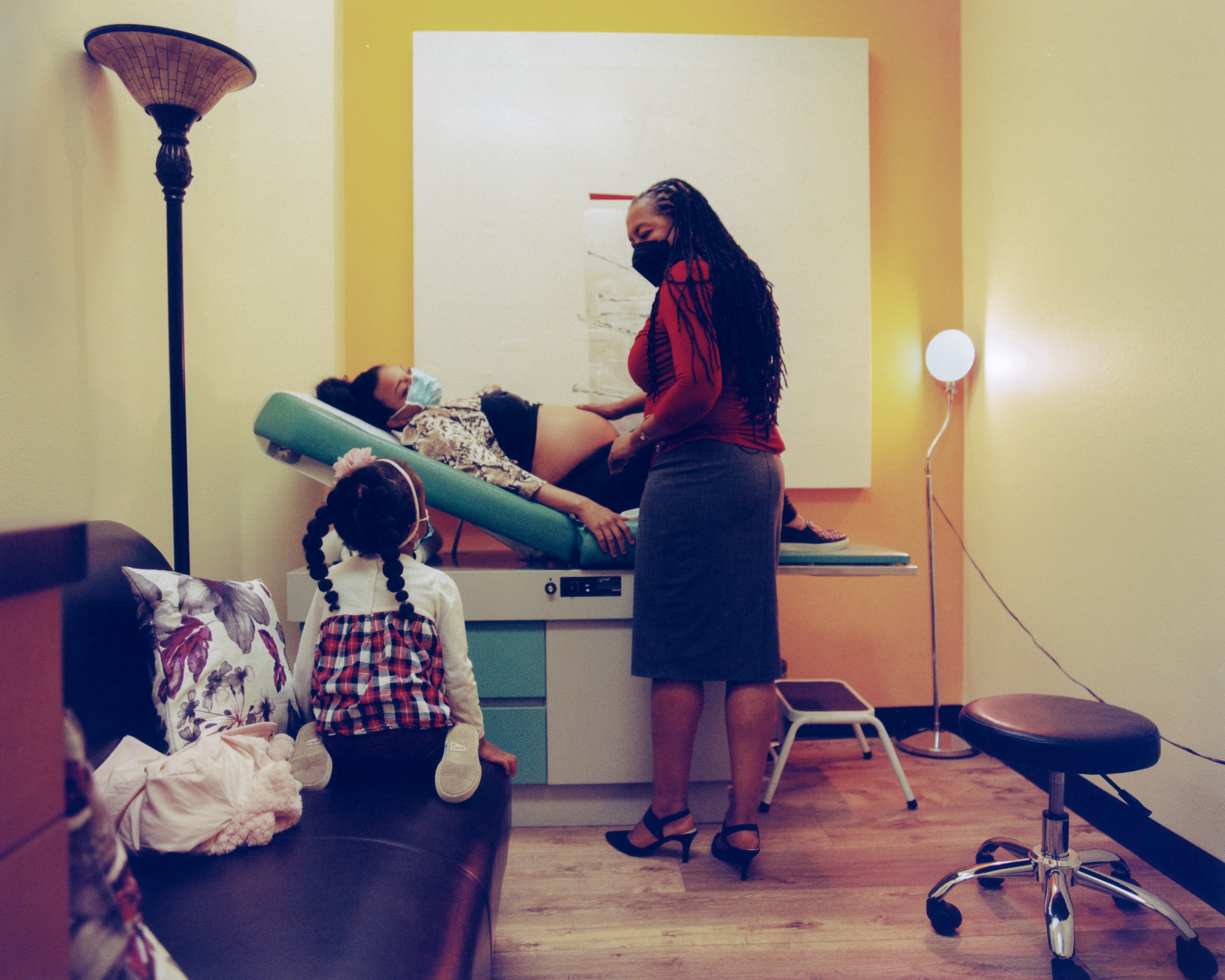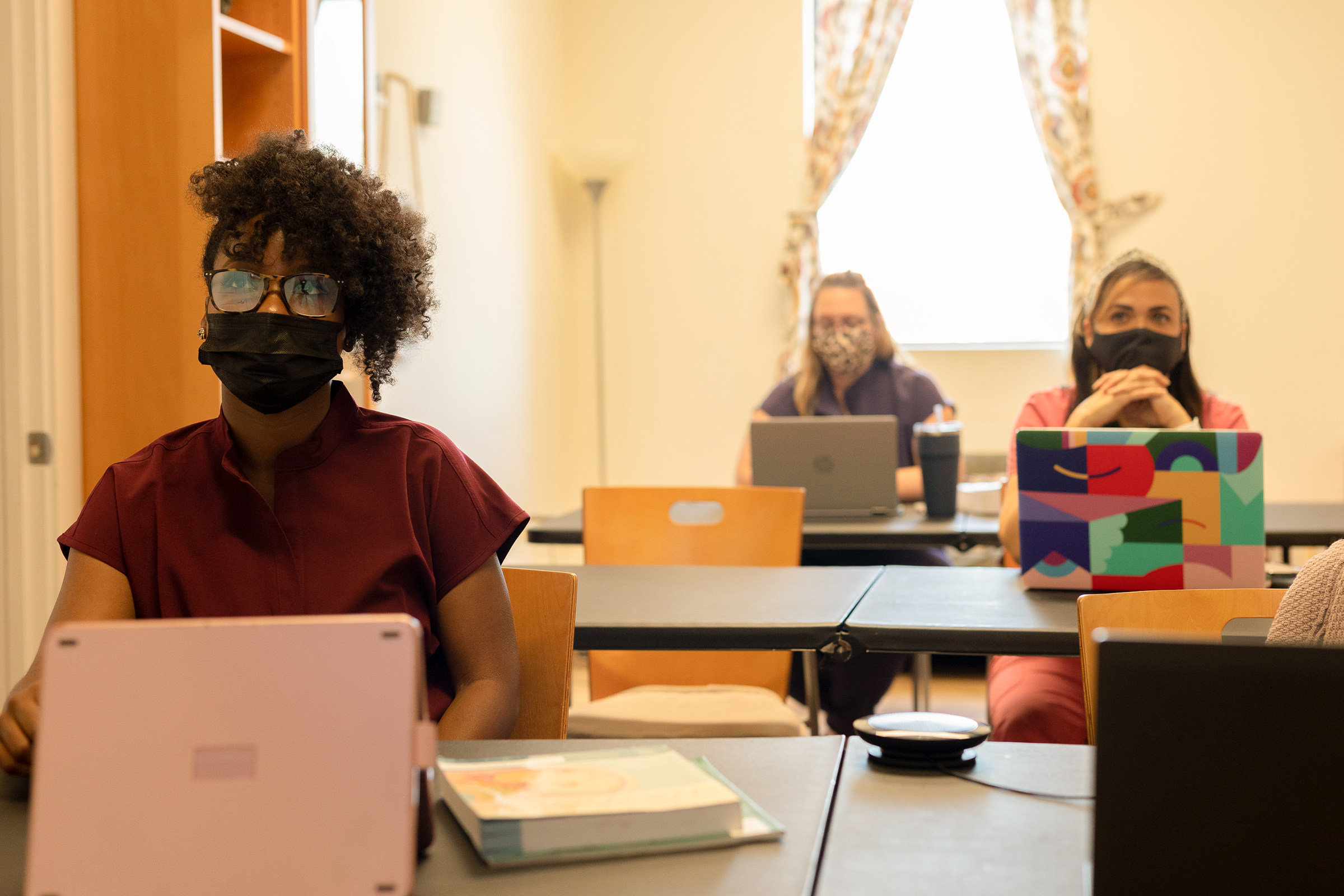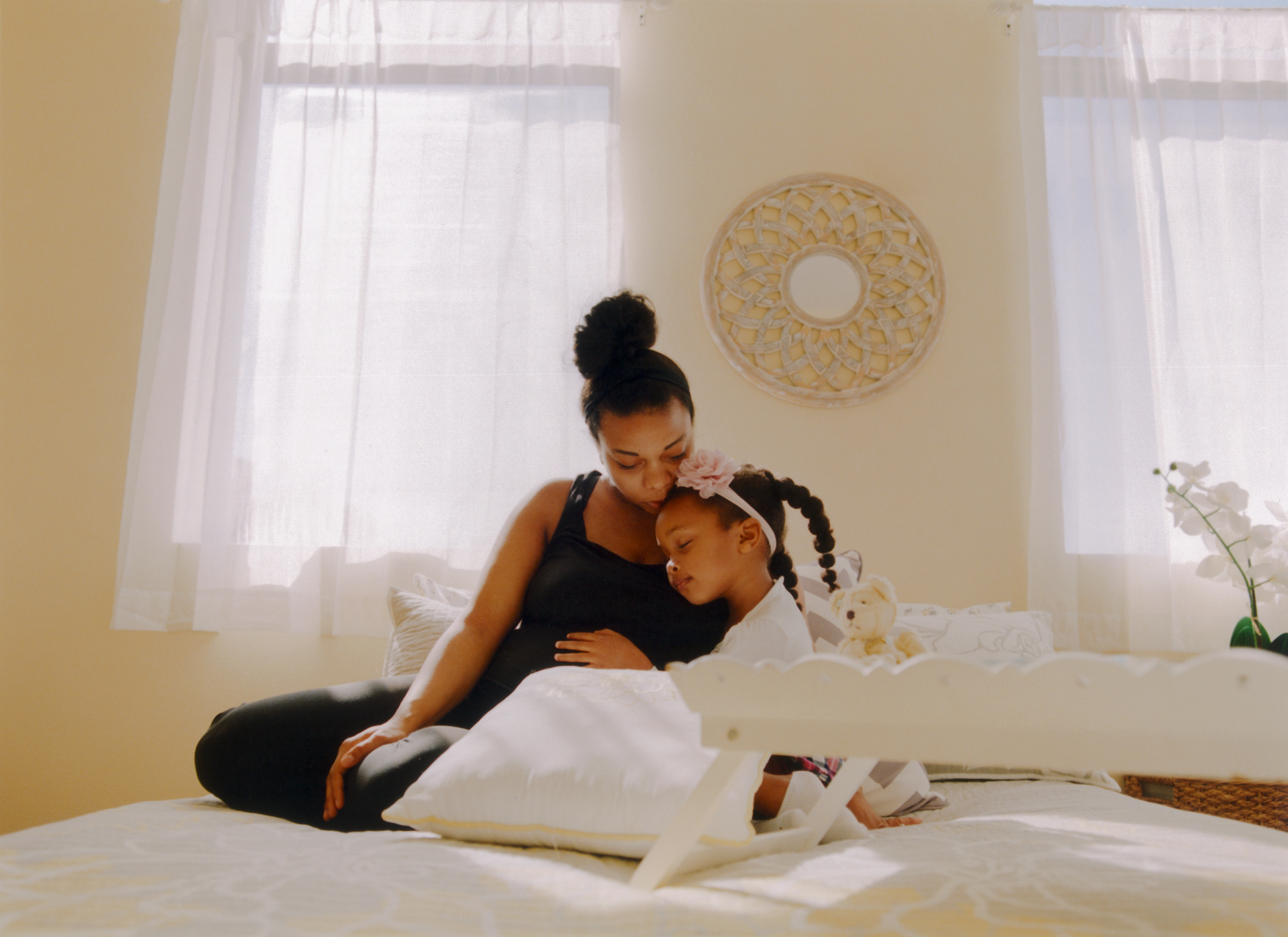Jennie Joseph walks into the exam room in her Winter Garden, Fla., birth center and unleashes a crinkly-eyed smile at her patient, who is 34 weeks pregnant, and her patient’s 4-year-old daughter. In a typical health care setting, an appointment like this one—with a healthy pregnant woman with no complications—would last just a few minutes. A quick exam and she’d be shown the door.
But that, says Joseph, is not the way she works. Instead, she seems to melt into the interaction, slowly reviewing test results, bantering about iron intake, and inviting the child to help measure her mother’s belly. “You need to feel safe, you need to feel whole, you need to feel supported,” Joseph, a certified professional midwife (CPM), says. “People come here because they want to feel heard.”
But treating her patients well is not the only reason that Joseph has become one of the pre-eminent advocates of—and a national role model for—midwifery in the U.S. Her philosophy, which she calls the “JJ Way,” is much more ambitious. It’s about leveraging the power of midwifery to support a pregnant person before and after they give birth, to draw on community-based care, and to avoid unnecessary interventions. And it’s about using those methods not only to provide the best possible care for individuals, but also to disrupt a system that Joseph says has led to racial and socio-economic disparities in maternal health care.
“There’s the calling to midwifery. It’s been my entire life,” she says. “Because you cannot stand by and tolerate injustice. Not when you’ve found ways that do actually make a difference.”

Joseph’s got her work cut out for her. The U.S. has the worst maternal death rate of any developed country, and it’s getting worse. Severe maternal complications more than doubled in the past 20 years. Black women are now three times more likely to die in pregnancy or childbirth than white women in the U.S., and Black babies are 60% more likely than white babies to be born prematurely and twice as likely to die before their first birthday. Unlike in the rest of the world, including other wealthy Western nations, American women do not generally have access to midwives. The U.S. has just four midwives per 1,000 live births; many European countries have five to 10 times that.
Read more: I Was Pregnant and in Crisis. All the Doctors and Nurses Saw Was an Incompetent Black Woman
But Joseph, 62, also has plenty of reasons to be hopeful. The culture around midwifery in the U.S. has begun to shift, driven in part by COVID-19, which overwhelmed hospitals and renewed interest in alternative ways to give birth, and in part by the advocates like the Congressional Black Maternal Health Caucus, which has succeeded in pushing legislation to improve maternal health. Last spring, Congress voted to allow states to extend Medicaid coverage for mothers up to one year after they give birth, and last fall, President Joe Biden signed the first bill in a package that would invest in studying and addressing racial disparities in maternal care.
Joseph is on the forefront of this shift. In 2020, she became the first Black person in the U.S. to privately own a nationally accredited midwifery school, where she is increasing the ranks of Black midwives, training other health workers around the country in midwifery principles, and developing a national network of like-minded providers.
“We’re building power, we’re building momentum,” she says. “We’re building a movement.”

When Joseph, who is British and studied midwifery in the U.K., moved to Orlando in 1989, most Americans had only the foggiest grasp of what a midwife does. “I was suddenly sort of unemployable,” she says.
It wasn’t always that way. For hundreds of years, Americans relied on midwives to help them give birth. That only began to change in the early 1900s, when medicine became professionalized and physicians argued that birth should take place in a hospital under a doctor’s care. Over just a few decades, midwives, many of whom were Black, Indigenous, or from immigrant communities, were regulated out of existence. Even today, a web of state-based regulations impose a host of certification and logistical requirements that make it difficult for midwives to practice, much less make a living at it.
Read more: A San Francisco Experiment Will Give Some Pregnant Women $1,000 a Month. Could Other Cities Be Next?
There are now roughly 15,000 midwives in the U.S., the vast majority of whom are certified nurse-midwives (CNMs) or certified midwives (CMs). About 90% of CNMs and CMs, who require advanced degrees and can attend births in hospitals, are white. Other midwives include certified professional midwives—what graduates of Joseph’s program can become—direct entry midwives, and traditional lay midwives. They typically help people giving birth at home or in non-hospital birth centers, but they mostly cannot deliver babies in hospitals; 13 states don’t allow CPMs to legally practice at all.
When Joseph first arrived in Florida, she helped push state lawmakers to reopen regulations that were preventing CPMs from practicing, and in 1995, she helped open a midwifery school. In 2009, she launched her current school, Common-sense Childbirth School of Midwifery. In 2020, it was accredited by the Midwifery Education Accreditation Council, which oversees non-nurse midwifery schools in the U.S. This year, she has two cohorts—totaling 27 students—enrolled in her three-year program for the first time.

Joseph’s strategy has earned some attention in mainstream public-health circles, which are beginning to link access to qualified midwives to positive outcomes at birth. In 2014, the journal Lancet found that including midwives in health care systems could prevent more than 80% of maternal and infant deaths around the globe. Another 2018 study, published in PLOS One, found that mothers and infants often have better outcomes in states where midwives are more integrated. Mainstream provider groups, including the American College of Obstetricians and Gynecologists (ACOG), have also gradually become more supportive of CNMs, partly as a response to a worsening shortage of ob-gyns. During the pandemic, ACOG and the American Academy of Pediatrics issued new guidance on home births, noting increased interest.
Still, challenges remain. Insurers don’t always cover prenatal and postpartum midwife care, or the cost of a home birth, and midwives, especially CPMs, must contend with distrust from physicians and medical associations who aren’t familiar with their work, says Dr. Deanna Wathington, a family-medicine physician who is now Commonsense Childbirth’s CEO. Joseph says that while midwifery generally works best for the majority of women who have healthy, low-risk pregnancies, those who have want or need to give birth with a physician can benefit from the midwife model of care too.
“If we could work together to create a new paradigm for how we provide care as a system,” Wathington says, “we could drastically improve the outcomes, especially for at-risk populations.”

On Fridays, Joseph’s clinic transforms into a school, modified for pandemic times. At 9 a.m., she logs on to a Zoom class, where she encourages her students to discuss ways in which their midwifery lens can inform other aspects of community health work. One student talks about her community in Montana, which doesn’t have enough ambulances. Another shares the difficulty of caring for a patient whose partner is abusing her. If all health providers took this course, “I think there would be a lot of aha moments,” one student says.
On other days, Commonsense Childbirth offers a range of classes for community organizers and other health care workers, from doulas to doctors, that help integrate Joseph’s philosophy into their work. Joseph is also guiding staff at nine clinics in seven states on how best to serve low-income and at-risk pregnant people who want hospital births.
Read More: Death Doulas Used to Be Rare. The COVID-19 Pandemic Changed That
Finally, Joseph is working to grow what she calls her National Perinatal Task Force—the apotheosis of her work. The dream, she says, is to build a nationwide network of providers, across all disciplines, to expand her map of “safe spots” where people can access patient-focused, culturally congruent care as easily as they might find a pharmacy.
The path to improving maternal health is not mysterious, Joseph says. “We know how easy it is and how cost-effective it is to put in place,” she adds. “And so once you know that, you must go forward.”

- Donald Trump Is TIME's 2024 Person of the Year
- Why We Chose Trump as Person of the Year
- Is Intermittent Fasting Good or Bad for You?
- The 100 Must-Read Books of 2024
- The 20 Best Christmas TV Episodes
- Column: If Optimism Feels Ridiculous Now, Try Hope
- The Future of Climate Action Is Trade Policy
- Merle Bombardieri Is Helping People Make the Baby Decision